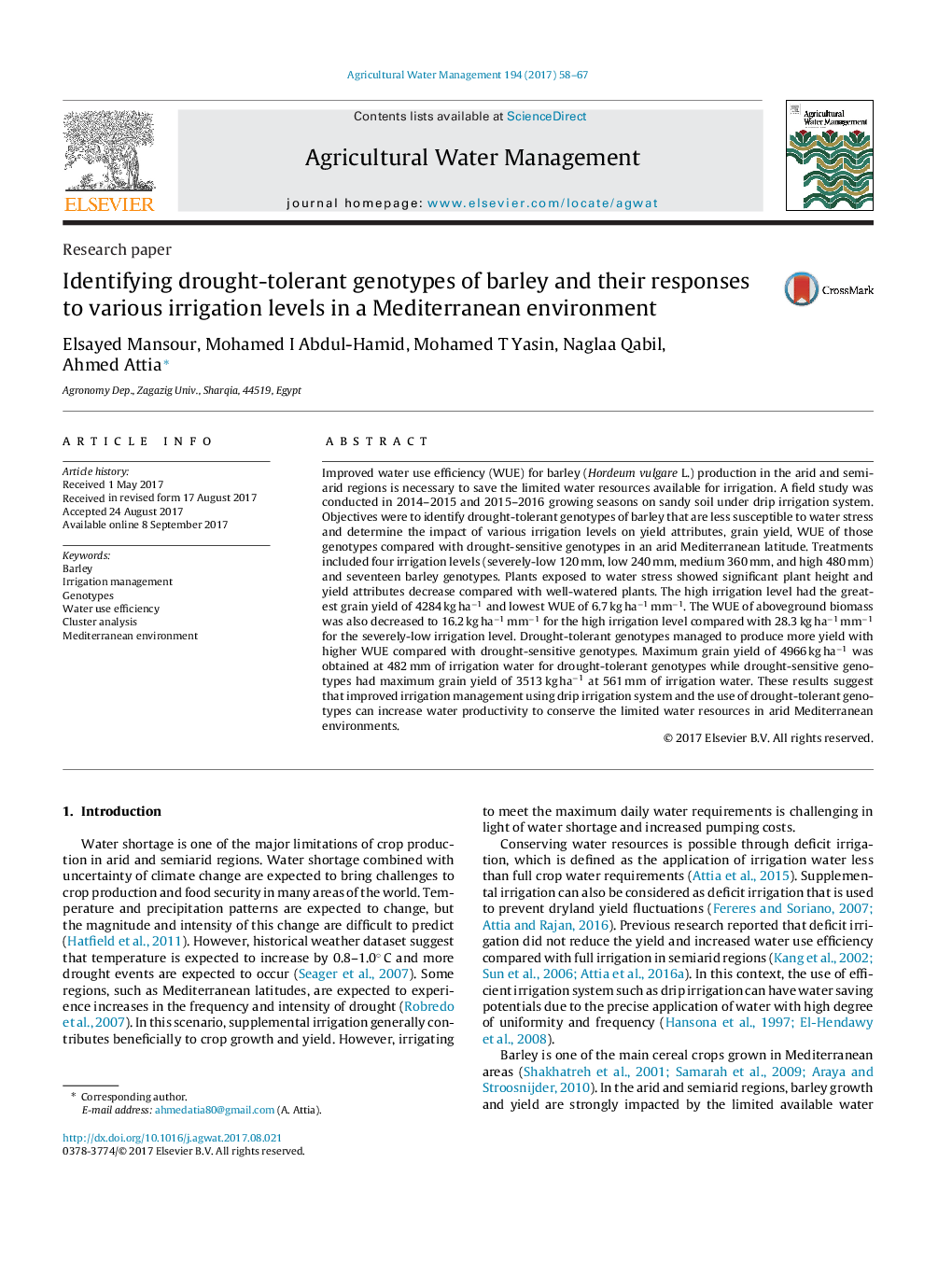| Article ID | Journal | Published Year | Pages | File Type |
|---|---|---|---|---|
| 5758468 | Agricultural Water Management | 2017 | 10 Pages |
Abstract
Improved water use efficiency (WUE) for barley (Hordeum vulgare L.) production in the arid and semiarid regions is necessary to save the limited water resources available for irrigation. A field study was conducted in 2014-2015 and 2015-2016 growing seasons on sandy soil under drip irrigation system. Objectives were to identify drought-tolerant genotypes of barley that are less susceptible to water stress and determine the impact of various irrigation levels on yield attributes, grain yield, WUE of those genotypes compared with drought-sensitive genotypes in an arid Mediterranean latitude. Treatments included four irrigation levels (severely-low 120 mm, low 240 mm, medium 360 mm, and high 480 mm) and seventeen barley genotypes. Plants exposed to water stress showed significant plant height and yield attributes decrease compared with well-watered plants. The high irrigation level had the greatest grain yield of 4284 kg haâ1 and lowest WUE of 6.7 kg haâ1 mmâ1. The WUE of aboveground biomass was also decreased to 16.2 kg haâ1 mmâ1 for the high irrigation level compared with 28.3 kg haâ1 mmâ1 for the severely-low irrigation level. Drought-tolerant genotypes managed to produce more yield with higher WUE compared with drought-sensitive genotypes. Maximum grain yield of 4966 kg haâ1 was obtained at 482 mm of irrigation water for drought-tolerant genotypes while drought-sensitive genotypes had maximum grain yield of 3513 kg haâ1 at 561 mm of irrigation water. These results suggest that improved irrigation management using drip irrigation system and the use of drought-tolerant genotypes can increase water productivity to conserve the limited water resources in arid Mediterranean environments.
Keywords
Related Topics
Life Sciences
Agricultural and Biological Sciences
Agronomy and Crop Science
Authors
Elsayed Mansour, Mohamed I Abdul-Hamid, Mohamed T Yasin, Naglaa Qabil, Ahmed Attia,
